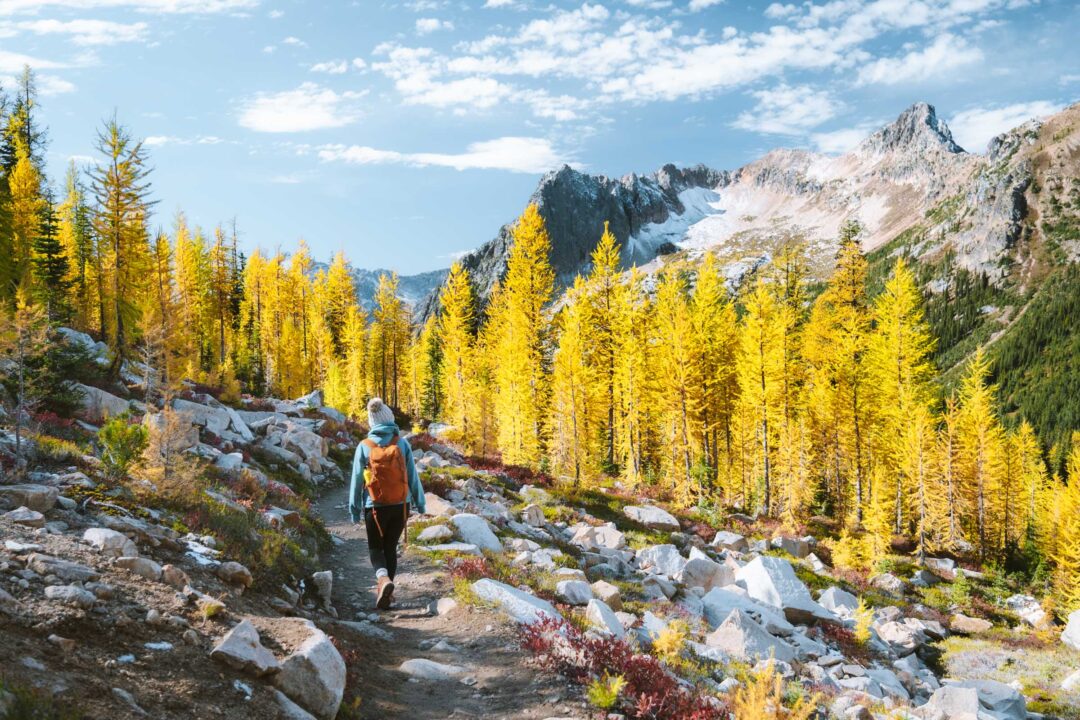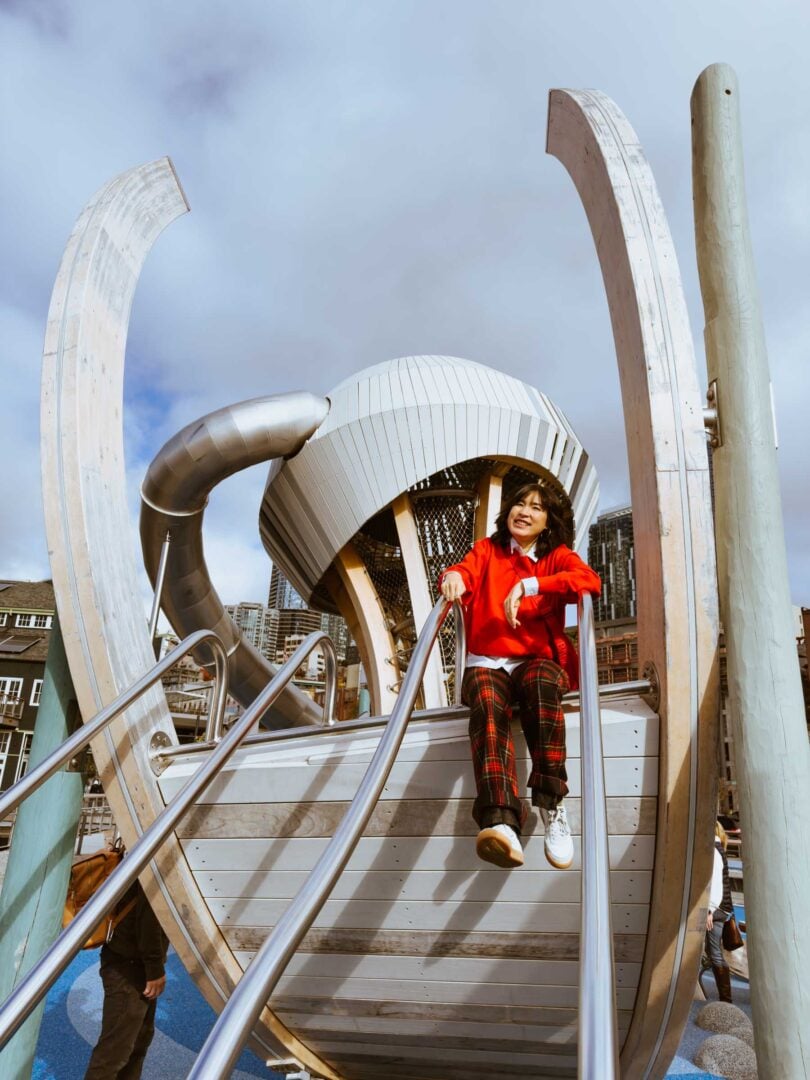Cutthroat Pass is an amazing viewpoint, no matter which way you get there. It’s located right at the edge of the tree line in the North Cascades, and opens up to panoramic views of rugged granite peaks, valleys, and alpine meadows.
And better yet, in the early fall, the larch trees along the trail turn a golden yellow color, lighting up the mountainside in warm, colorful autumn hues.
Even if you don’t hike Cutthroat Pass for the larches, it’s still an incredibly beautiful place. Its mountain valleys are framed by alpine meadows and jagged granite peaks rising in the distance. It’s everything you imagine when you think of a mountain hike.
But getting to Cutthroat Pass can be quite a challenge. While the trail itself is well-maintained and not technically difficult, the round-trip distance to the pass is 10 miles, with a steady incline of about 2,000 feet. It’s a long haul that can sneak up on you if you’re not ready. But if you’re willing to put in the effort, the views along the trail are more than worth it.
In this guide, I’ll share everything you need to know before hiking to Cutthroat Pass in the North Cascades, including how to get there, what to expect on the trail, and tips from our own experience to help you make the most of your hike to this epic mountain pass in Washington.



Cutthroat Pass Complete Hiking Guide
There are two main ways to reach Cutthroat Pass:
- Via the Pacific Crest Trail (PCT) from Highway 20
- Via the Cutthroat Creek Trail starting at Forest Road 400
Both routes are long. Both are uphill. And both have incredible views.
That said, the PCT route is the more popular option. It’s slightly shorter and has less elevation gain. That’s also the route we hiked.
The trailhead for Cutthroat Pass via the PCT is located right off Highway 20. There’s a designated parking lot, but during peak larch season (late September to early October), it fills up fast. Unless you camp overnight in your vehicle or show up early, you’ll probably end up parking along the forest road or even Highway 20 itself. Come prepared for that.
The hike starts off mellow. You’ll begin on a wide, well-maintained trail that gently climbs through dense forest. There are a few small creek crossings early on, but nothing overly technical.
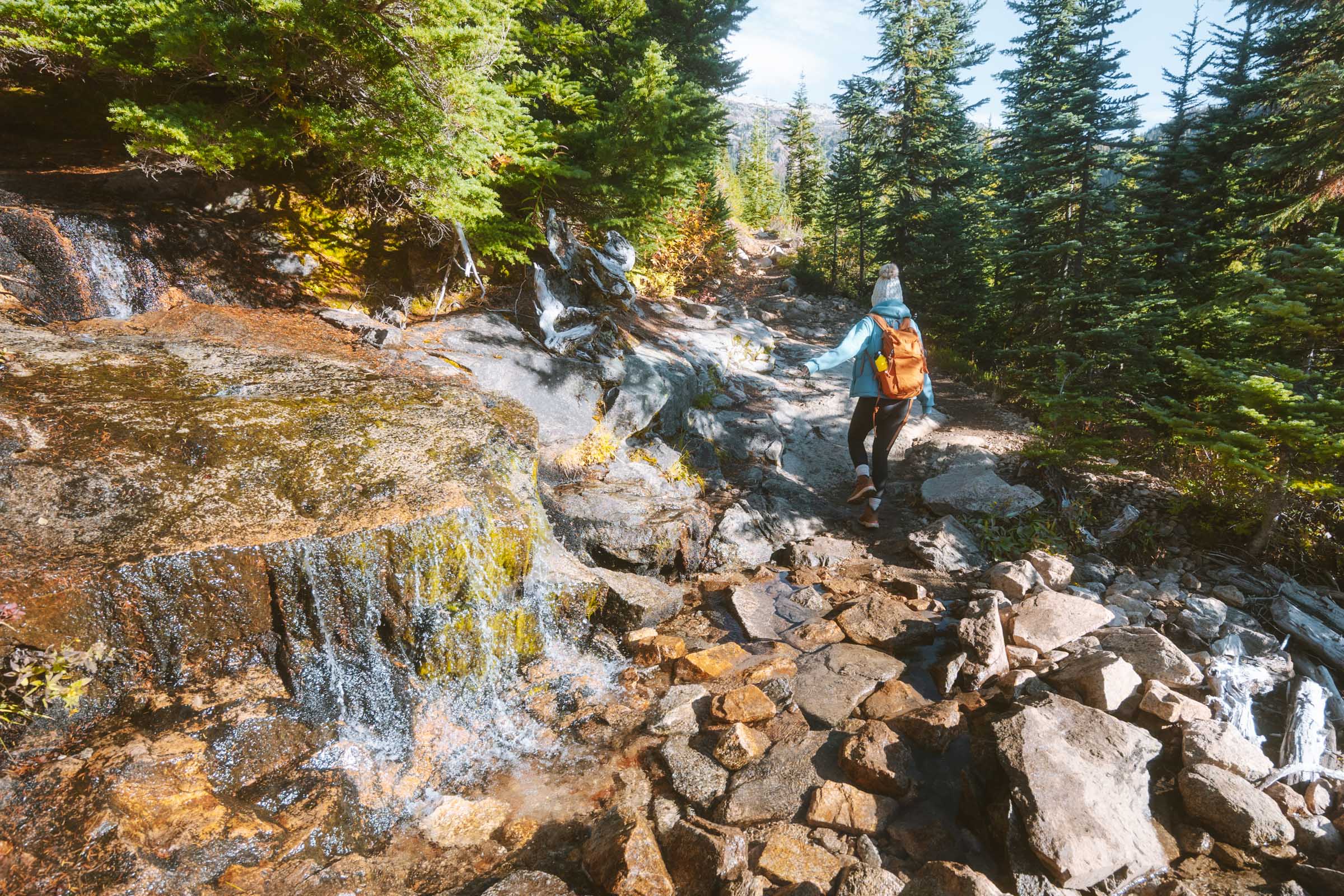

About 1.7 miles in, just after crossing Porcupine Creek, the trail steepens. This is where the real climb begins. The trees start to thin, and the views begin to open up.
Suddenly, the larches start to appear. These deciduous conifers turn a golden yellow color in early fall, transforming the mountainside into a spectacular display of autumn hues.

Soon you’ll emerge onto a trail lined by rocks amongst the backdrop of Porcupine Peak rising behind you. The trail cuts across open slopes, and the views get better and better the higher you go.
As you approach the pass, turn around to spot Maple Pass and the jagged peaks beyond it.


After a steady ascent, you’ll reach Cutthroat Pass. It’s a wide saddle with a sweeping view over the entire area.
Cutthroat Lake sits nestled far in the valley below, with Hinkhouse Peak towering above. This is the spot where most people stop to rest, snap photos, and soak it all in.

Most hikers stop right next to the trail at the pass, but there is more to see there. Head north toward the ridgeline for more dramatic views, or follow the trail along the southern ridge to find a quieter spot away from the main trail, to a more secluded spot to enjoy a snack.

Cutthroat Pass via the Pacific Crest Trail Hike Details
- Hike Distance: The total distance of the hike is about 10 miles, out-and-back.
- Hike Duration: The hike takes about 6 hours total, including time spent hanging out at Cutthroat Pass to enjoy its incredible views.
- Hike Difficulty: The Cutthroat Pass trail difficulty is moderate/hard. The trail is in good shape and easy to follow, but its distance makes it challenging.
- Hike Incline: The total incline for this hike is about 2000 feet. The trail has a steady incline all the way up to the pass, but it’s not overly steep.
- Larches: The trail to Cutthroat Pass is one of the best spots in the North Cascades to see golden larches in the fall. These alpine trees turn golden yellow in late September through early October. Expect more crowds during larch season.
- Dogs are allowed on this trail, but must be on a leash.
- A Northwest Forest Pass is required to park at the trailhead for Cutthroat Pass.


How to get to the Cutthroat Pass Trailhead
The Cutthroat Pass Trailhead is located just off Highway 20 in the North Cascades.
There’s a parking area at the trailhead. However, during larch season in early October, the parking fills up quickly, especially on weekends. If that happens, park along the road to the trailhead or Highway 20 instead.
The map location below for the Cutthroat Pass Trailhead is accurate and can be used to navigate there. Don’t forget your Northwest Forest Pass to park at the trailhead for Cutthroat Pass.

Cutthroat Pass: Our Experience
Our adventure to Cutthroat Pass actually began the day before our hike. We knew how popular this trail gets during peak larch season, so we decided to car camp at the trailhead to lock in a good parking spot and hit the trail early.
Our plan worked perfectly.
We rolled in during the early evening and managed to snag a spot right at the trailhead. We settled in for the night and got a solid rest in the back of our car. The next morning, we woke up with the sun, laced up our hiking boots, and hit the trail.
The hike started off mellow. We followed the trail as it wound through dense forest and crossed a few small creeks.


But it was cold. The sun hadn’t touched the trail yet, and the air in the forest was frigid. But soon enough, the hiking warmed us up, and we stopped to take off our jackets.
And after hiking about three miles in, the forest finally began to thin out. That’s when the views started to open up. Sunlight finally broke through the trees, and golden larches started making an appearance along the trail.
We couldn’t help but stop and stare. And as we emerged into a rocky area of the trail, there was nothing but larch trees alongside, now glowing in the morning light. The further we climbed, the more golden the landscape became.

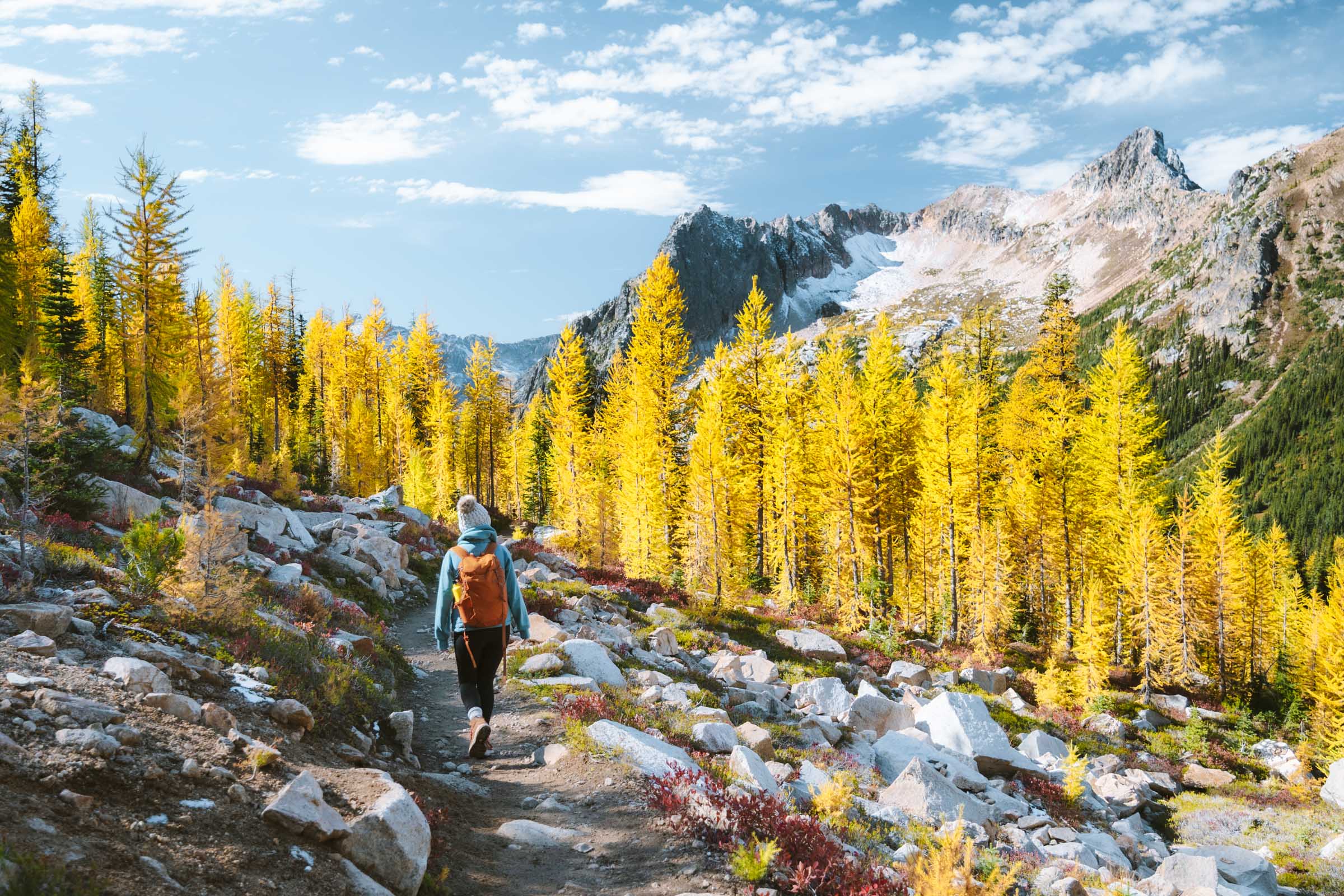
As we got higher, the forest continued to give way to more open terrain. The trail cut across rocky slopes, with views stretching farther and farther.
We saw the trail zigzagging ahead of us across the ridgeline. The views were already incredible, and we hadn’t even reached the pass yet.

And when we finally got to the top of Cutthroat Pass, the terrain opened up to a whole new landscape.
Below us was Cutthroat Lake, tucked beneath a sea of larches dotting the mountainside, cascading down into the valley. Hinkhouse Peak stood tall in the background, front and center, amongst a series of jagged granite peaks.



A bunch of other hiking groups were already posted up at the pass near the trail, relaxing and taking in the scenery. So we did the same and ate our lunch.
But we weren’t done exploring just yet. After our snack, we followed a side trail down onto a ridge that juts out south from the pass.

That ridge turned out to be my favorite part of the hike. It had some of the best views of the area, along with small, scattered campsites tucked in between the larches. It always surprises me how many cool little spots you can find if you’re willing to explore.
But as the late afternoon began to creep in, we knew it was time to leave if we wanted to make it back before dark. It was hard to leave those epic views, but a 5-mile hike down the trail was nothing to laugh at.
And the hike down was no joke. In some ways, it was tougher than the climb up. The constant downhill was hard on my knees.
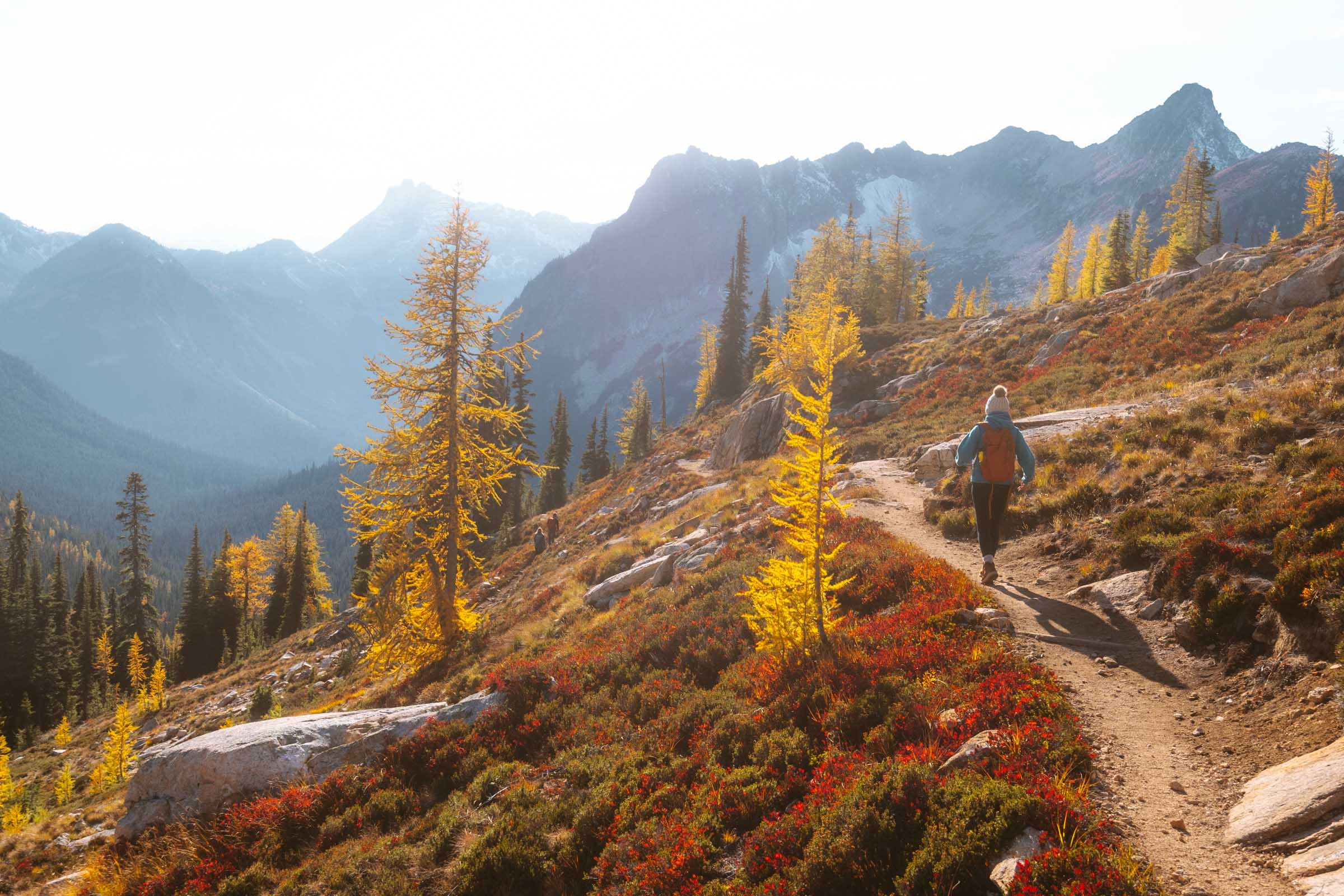

But we powered through and made it back to the trailhead just as the last light was fading. We were tired, sore, but absolutely stoked about the epic larch hike we just did to Cutthroat Pass.
Cutthroat Pass via PCT Trail Photos
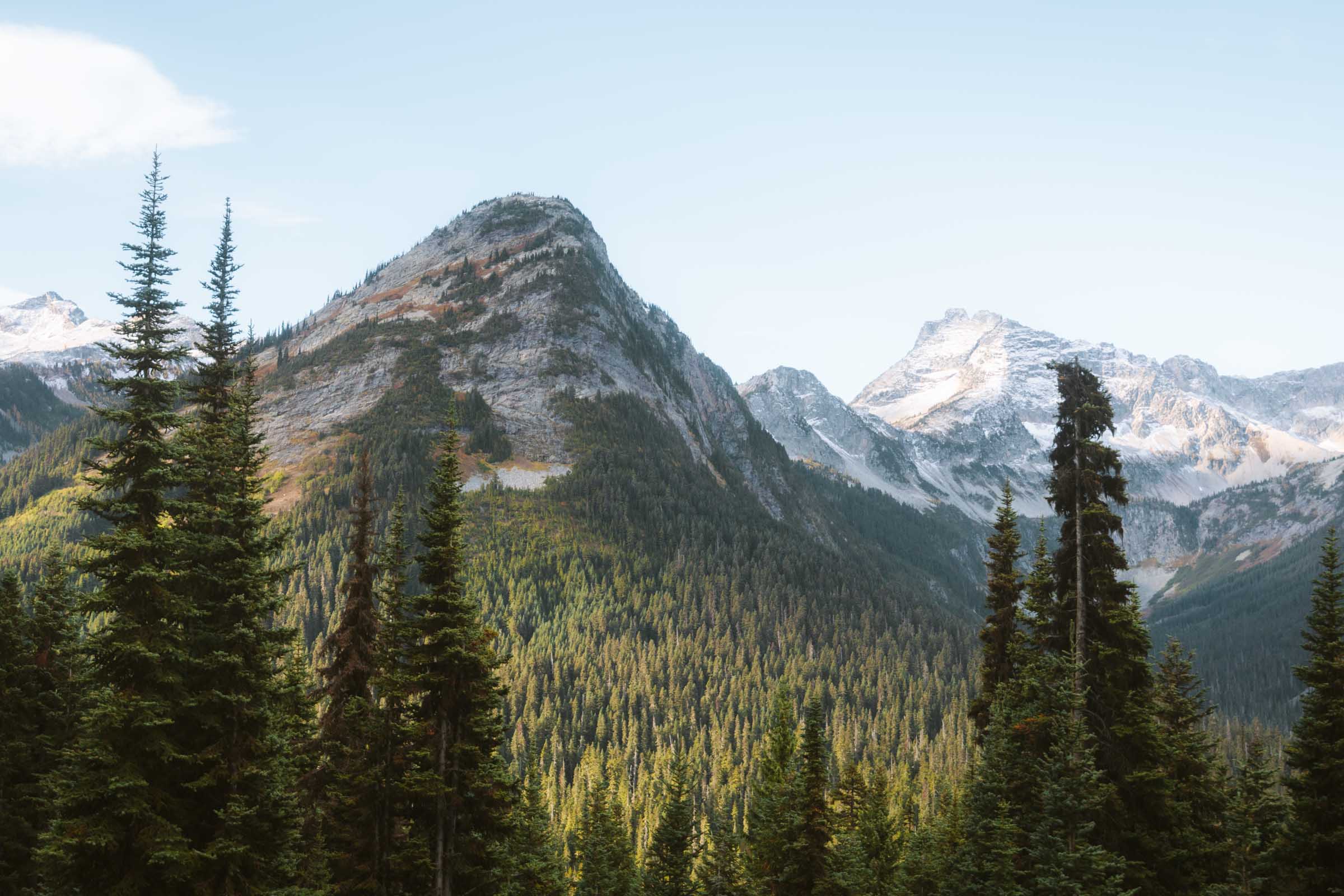





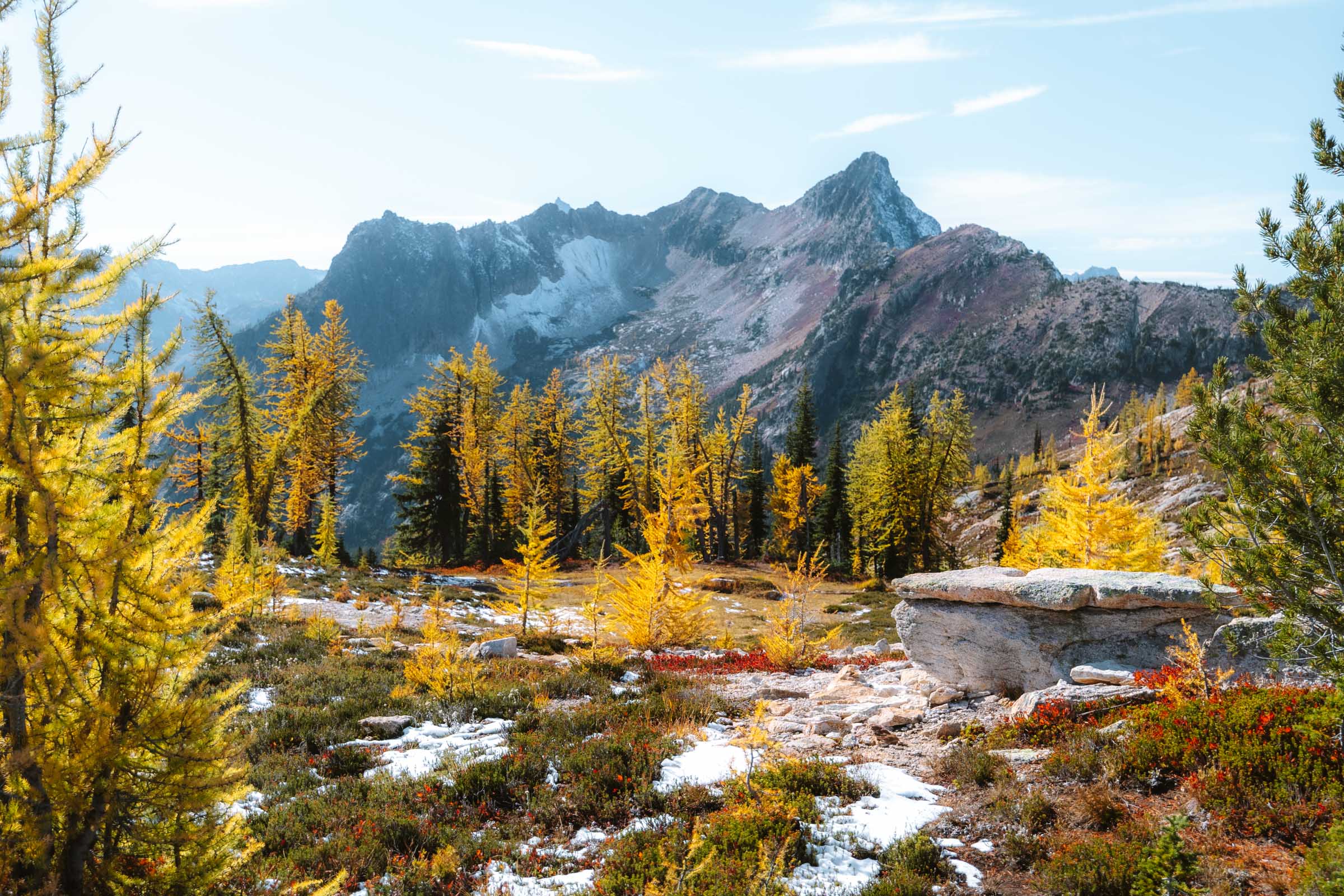


Are you following our Washington blog series?
We’re based in Seattle and have done tons of things all over Washington. To help fellow adventurers, we’ve put together guides to the best places we found. You can check them out by clicking the links below.
- Our ultimate Seattle guide: 29 Incredible Things to Do in Seattle
- Our Seattle hiking guide: 11 Incredible Hikes Near Seattle
- Best things to do in Mount Rainier: 12 Unique Things to Do in Mount Rainier
- Our ultimate Mount Rainier hiking guide: 20 Incredible Hikes in Mount Rainier
- Best day trip from Seattle: 11 Awesome Things to Do on Bainbridge Island
- Best winter weekend trip in Washington: 8 Amazing Things to Do in Leavenworth in Winter

I hope you enjoyed our guide to hiking to Cutthroat Pass via the PCT trail in the North Cascades. Feel free to leave a comment below if you have any questions 🐸

